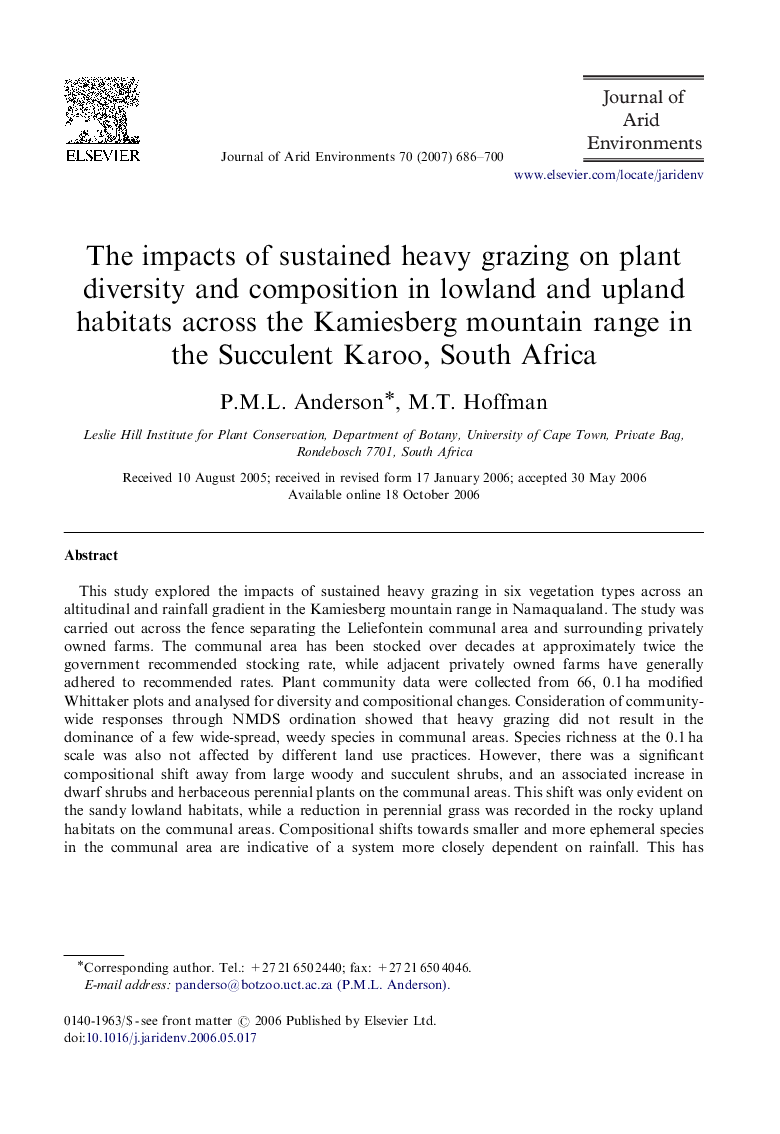| Article ID | Journal | Published Year | Pages | File Type |
|---|---|---|---|---|
| 4394319 | Journal of Arid Environments | 2007 | 15 Pages |
Abstract
This study explored the impacts of sustained heavy grazing in six vegetation types across an altitudinal and rainfall gradient in the Kamiesberg mountain range in Namaqualand. The study was carried out across the fence separating the Leliefontein communal area and surrounding privately owned farms. The communal area has been stocked over decades at approximately twice the government recommended stocking rate, while adjacent privately owned farms have generally adhered to recommended rates. Plant community data were collected from 66, 0.1Â ha modified Whittaker plots and analysed for diversity and compositional changes. Consideration of community-wide responses through NMDS ordination showed that heavy grazing did not result in the dominance of a few wide-spread, weedy species in communal areas. Species richness at the 0.1Â ha scale was also not affected by different land use practices. However, there was a significant compositional shift away from large woody and succulent shrubs, and an associated increase in dwarf shrubs and herbaceous perennial plants on the communal areas. This shift was only evident on the sandy lowland habitats, while a reduction in perennial grass was recorded in the rocky upland habitats on the communal areas. Compositional shifts towards smaller and more ephemeral species in the communal area are indicative of a system more closely dependent on rainfall. This has implications for people's livelihoods in the region, particularly in light of predicted climate change.
Related Topics
Physical Sciences and Engineering
Earth and Planetary Sciences
Earth-Surface Processes
Authors
P.M.L. Anderson, M.T. Hoffman,
